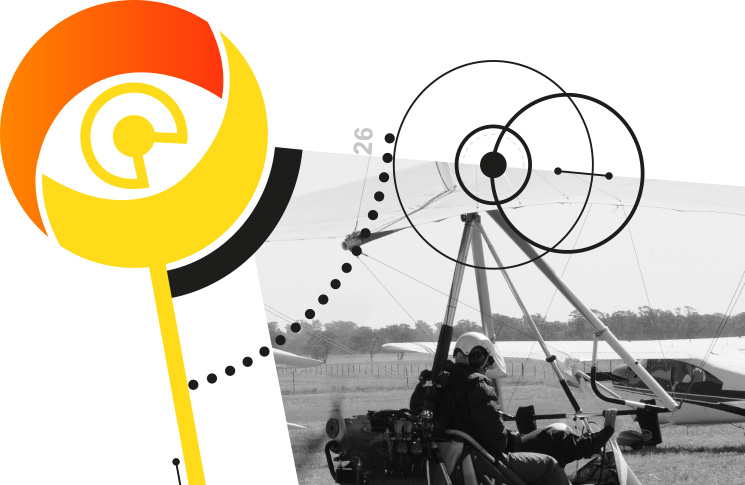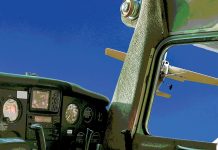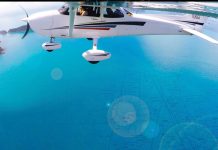Matthew Tomlinson
15 seconds. That was all it took. From the threat first being detected, to a potentially deadly situation, took just 15 seconds. This is the day I learned that a nice day of flying can turn deadly in the blink of an eye. It is also the day I Iearned the limitations of alerted see-and-avoid.
The day began three years ago at my home airfield, Wollongong, in NSW. I had been flying microlights there for a number of years, and knew the local environment well. It was a fine day for flying, and I had enjoyed a nice trip down the coast to explore Jervis Bay. The visibility was excellent, and my passenger and I had taken some stunning photographs of the white sands on Hyams beach. Returning to Wollongong after a couple of hours in the air, the belching chimney stack from the steel works at Port Kembla indicated a gentle sea breeze coming in from the north east. This was quite usual for the time of year, and meant me planning an approach to land towards the north, on runway 34.
With my inbound call complete, I tracked straight towards the field and positioned to overfly at 1500 feet. A quick look down at the windsock—still north-easterly—and I began a gentle descent on the dead-side to the west of the airfield. Things were quiet; there had been no other traffic that I had heard since my 10-mile inbound call. Excellent I thought, that’s one less thing to worry about.
‘Wollongong traffic. Microlight 1234 joins mid-field crosswind runway 34, Wollongong.’
It was the second I let go of the microphone switch that I heard it. ‘Wollongong traffic. Cherokee Alpha Bravo Charlie joins mid-field crosswind runway 34, Wollongong.’
Huh? Instant confusion began to dominate my senses. I hadn’t, up until this point, seen or heard a thing. And now another aircraft was telling me that they were in an identical position to me. I began to frantically look around me in every direction I could, trying to temper my increasing heart rate and adrenalin levels. Nothing. Perhaps he was above me? In a weightshift microlight, with the fabric wing above you, your visibility is great in every direction except directly above. I began a gentle turn to the left and back again to inspect the airspace above me. Nothing. Where on earth was he? There was nothing for it but to ask.
‘Cherokee Alpha Bravo Charlie, this is microlight 1234, your present position please?’
‘Ummm … Alpha Bravo Charlie … is … urrrmmm … joining mid-field crosswind runway 34.’
I strained to interpret the call. It was not a pilot’s voice I knew from Wollongong airport. It was hesitant, and sounded inexperienced. And more importantly, it didn’t really help me understand why I couldn’t see him.
‘Crossing the runway centreline now,’ the voice added, nervously, in a follow-up transmission.
So was I.
It was then that we passed each other.
Flying head-on, with a closing speed of perhaps 150 kt, I was close enough to see a pair of startled eyes looking at me from the cockpit of the Cherokee. I had no time to do anything other than view the situation I found myself in.
And as quickly as it started, it was over. I tried to suppress my true feelings, and instead tried to act as professional as I could muster in the circumstances.
‘Cherokee Alpha Bravo Charlie, microlight 1234 is visual with you now, and be advised that circuits are RIGHT HAND on runway 34 at Wollongong.’
It was now so clear to me. So obvious in hindsight. I was simply looking in the wrong place. Alerted see and avoid is only as good as the pilot making the radio call. If you make a mistake, like joining crosswind from the wrong direction, every other pilot is going to be looking for you in the wrong place. I would argue that in this case, the other pilot’s error that day reduced safety margins below that of (non-alerted) see and avoid. My attention was deliberately drawn away from his location, not towards it. I was looking to the west of the field, while he was arriving from the east. And I believe that this is the main reason I didn’t see him until he was flying right past me. The only thing that saved both of us that day was the luck that we had 200 m of lateral separation between us. That, for me, was too close a call.
I made an effort to talk to the other pilot after we had both landed. I extended a hand and introduced myself as ‘the microlight pilot you nearly collided with’. I was friendly, and we spoke about what had happened. It was a simple mistake by a low-hour PPL-student from Bankstown, who hadn’t paid enough attention to ERSA when pre-flight planning his solo navigation exercise.
I learned a valuable lesson that day. I learned that alerted see and avoid is the best that most of us non-commercial pilots have to assist us in avoiding each other. But I also learned that it is only as good as the pilots who use it.






Comments are closed.